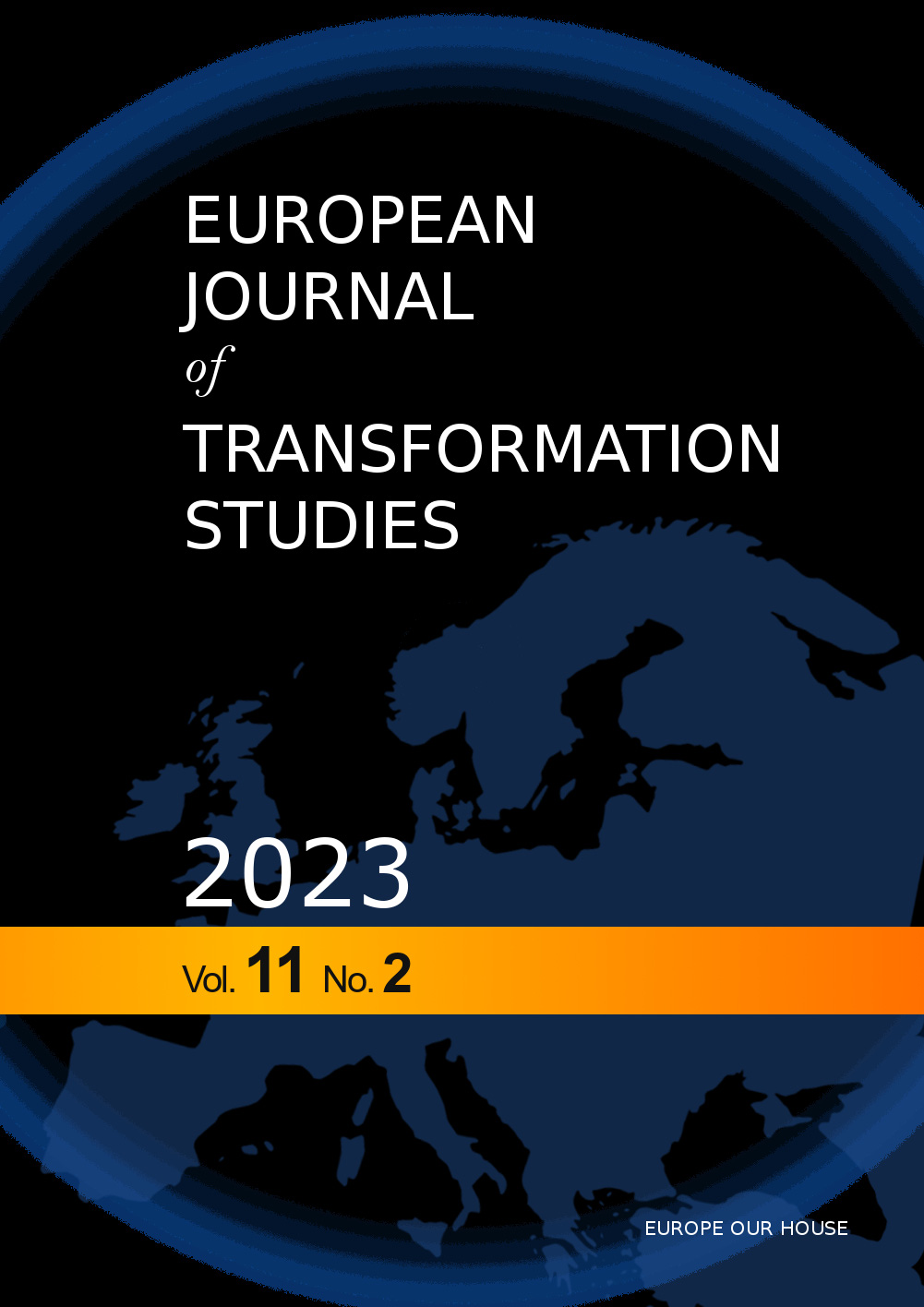Virtual Land Resources In Türkiye’s Crop Trade
Keywords:
Virtual Land Trade, Crop Trade, Türkiye, Embodied Land, Arable Land FlowsAbstract
Virtual land refers to implicit land resources displaced between countries in the trade of agricultural products. Virtual land flows can be measured using trade volume and country and year-specific yield data of products. This study aims to measure and reveal the longterm changes in virtual land flows in Türkiye’s crop trade from 1986 to 2020. The results show that Türkiye’s net virtual land imports in crop trade had increased from approximately -670 thousand hectares in 1986 to 7 million hectares in 2020. Turkey's annual average net virtual land import is 1.8 million hectares.
Downloads
References
Allan, J. A. (1993). Fortunately, There are Substitutes for Water Otherwise Our Hydro-Political Futures would be Impossible. Priorities for Water Resources Allocation and Management, 13(4), 26. https://www.ircwash.org/sites/default/files/210-93PR-11967.pdf#page=18.
Allan, T. (1999). Productive Efficiency and Allocative Efficiency: Why Better Water Management may not Solve the Problem. Agricultural Water Management, 40(1), 71–75. https://doi.org/10.1016/S0378-3774(98)00106-1.
Borgstrom, G., 1965. The Hungry Planet: The Modern World at the Edge of Famine. Collier-MacMillan, London.
Burke, M., Oleson, K., McCullough, E., & Gaskell, J. (2009). A Global Model Tracking Water, Nitrogen, and Land İnputs and Virtual Transfers from İndustrialized Meat Production and Trade. Environmental Modeling & Assessment, 14, 179–193. https://doi.org/10.1007/s106 66-008-9149-3.
Cao, C., & Yuan, G. (2022). Foreign Trade and Virtual Land Resources: A Case Study of China's Grain. Agricultural Economics, 68(7), 259–270. https://doi.org/10.17221/85/2022- AGRICECON.
Chen, G. Q., & Han, M. Y. (2015). Virtual Land Use Change in China 2002–2010: Internal Transition and Trade İmbalance. Land Use Policy, 47, 55–65. https://doi.org/10.1016/ j.landusepol.2015.03.017.
Chen, Z. M., & Chen, G. Q. (2013). Virtual Water Accounting for the Globalized World Economy: National Water Footprint and İnternational Virtual Water Trade. Ecological Indicators, 28, 142–149. https://doi.org/10.1016/j.ecolind.2012.07.024.
Dalin, C., Konar, M., Hanasaki, N., Rinaldo, A., & Rodriguez-Iturbe, I. (2012). Evolution of the Global Virtual Water Trade Network. Proceedings of the National academy of Sciences, 109(16), 5989–5994. https://doi.org/10.1073/pnas.1203176109.
Ewers, R. M., Scharlemann, J. P., Balmford, A., & Green, R. E. (2009). Do Increases in Agricultural Yield Spare Land for Nature?. Global Change Biology, 15(7), 1716–1726. https://doi.org/10.1111/j.1365-2486.2009.01849.x.
Fader, M., Gerten, D., Thammer, M., Heinke, J., Lotze-Campen, H., Lucht, W., & Cramer, W. (2011). Internal and External Green-Blue Agricultural Water Footprints of Nations, and Related Water and Land Savings through Trade. Hydrology and Earth System Sciences, 15(5), 1641–1660. https://doi.org/10.5194/hess-15-1641-2011.
Fan, X., Liu, H., & Wang, M. (2022). Study on the Agricultural Land Transfer Embodied in Inter-Provincial Trade in China. Land, 11(5), 1–15. https://doi.org/10.3390/land11050656.
FAO, (2001). Food Balance Sheets. https://www.fao.org/3/x9892e/X9892E00.htm#TopOfPage FAOSTAT, (2023). https://www.fao.org/faostat/en/#data/QCL.
Gerbens-Leenes, P. W., Nonhebel, S., & Ivens, W. P. M. F. (2002). A Method to Determine Land Requirements Relating to Food Consumption Patterns. Agriculture, Ecosystems & Environment, 90(1), 47–58. https://doi.org/10.1016/S0167-8809(01)00169-4.
Ioris, A. A. (2004). Virtual Water in an Empty Glass: The Geographical Complexities behind Water Scarcity. Water International, 29(1), 119–121. https://doi.org/10.1080/02508060408691755.
Kastner, T., & Nonhebel, S. (2010). Changes in Land Requirements for Food in the Philippines: A Historical Analysis. Land Use Policy, 27(3), 853–863. https://doi.org/10.10 16/j.landusepol.2009.11.004.
Kastner, T., Kastner, M., & Nonhebel, S. (2011). Tracing Distant Environmental İmpacts of Agricultural Products from a Consumer Perspective. Ecological Economics, 70(6), 1032– 1040. https://doi.org/10.1016/j.ecolecon.2011.01.012.
Kumar, R., Singh, R. D., & Sharma, K. D. (2005). Water Resources of India. Current Science, 794–811. https://www.jstor.org/stable/24111024.
Matson, P. A., Parton, W. J., Power, A. G., & Swift, M. J. (1997). Agricultural Intensification and Ecosystem Properties. Science, 277(5325), 504–509. https://doi.org/10.1126/science.277.5325.504.
Meyfroidt, P., Lambin, E. F., Erb, K. H., & Hertel, T. W. (2013). Globalization of Land Use: Distant Drivers of Land Change and Geographic Displacement of Land Use. Current Opinion in Environmental Sustainability, 5(5), 438–444. https://doi.org/10.1016/j.cosust.2013.04.003.
Rudel, T.K., Schneider, L., Uriarte, M., Turner, B.L., DeFries, R., Lawrence, D., Geoghegan, J., Hecht, S., Ickowitz, A., Lambin, E.F., Birkenholtz, T., Baptista, S., Grau, R., (2009).
Agricultural Intensification and Changes in Cultivated Areas, 1970–2005. Proceedings of the National Academy of Sciences ofthe United States of America 106, 20675–20680. https://doi.org/10.1073/pnas.0812540106.
Qiang, W., Liu, A., Cheng, S., Kastner, T., & Xie, G. (2013). Agricultural Trade and Virtual Land Use: The Case of China's Crop Trade. Land Use Policy, 33, 141–150. https://doi.org/ 10.1016/j.landusepol.2012.12.017.
Qiang, W., Niu, S., Liu, A., Kastner, T., Bie, Q., Wang, X., & Cheng, S. (2020). Trends in Global Virtual Land Trade in Relation to Agricultural Products. Land Use Policy, 92, 1–12. https://doi.org/10.1016/j.landusepol.2019.104439.
Wang, J., Wang, S., & Zhou, C. (2021). Quantifying Embodied Cultivated Land-Use Change and its Socioeconomic Driving Forces in China. Applied Geography, 137, 1–10. https://doi.org/10.1016/j.apgeog.2021.102601.
Wichelns, D. (2001). The Role of „Virtual Water ‟ in Efforts to achieve food Security and other National Goals, with an eExample from Egypt. Agricultural Water Management, 49(2), 131– 151. https://doi.org/10.1016/S0378-3774(00)00134-7.
World Bank, (2023). https://databank.worldbank.org/source/world-development-indicators#.
Würtenberger, L., Koellner, T., & Binder, C. R. (2006). Virtual Land Use and Agricultural Trade: Estimating Environmental and Socio-Economic İmpacts. Ecological Economics, 57(4), 679–697. https://doi.org/10.1016/j.ecolecon.2005.06.004.
Xiong, Y. L., Tian, X., Liu, S. W., & Tang, Z. P. (2020). New Patterns in China‟s Water Footprint: Analysis of Spatial and Structural Transitions from a Regional Perspective. Journal of Cleaner Production, 245, 1–15. https://doi.org/10.1016/j.jclepro.2019.118942.
Yang, H., Wang, L., Abbaspour, K. C., & Zehnder, A. J. (2006). Virtual Water Trade: An Assessment of Water Use Efficiency in the İnternational Food Trade. Hydrology and Earth System Sciences, 10(3), 443–454. https://doi.org/10.5194/hess-10-443-2006.
Yang, H., & Zehnder, A. (2007). “Virtual Water”: An Unfolding Concept in İntegrated Water Resources Management. Water Resources Research, 43 (12). https://doi.org/10.1029/2007 WR006048.
Zhang, J., Zhao, N., Liu, X., & Liu, Y. (2016). Global Virtual-Land Flow and Saving through International Cereal Trade. Journal of Geographical Sciences, 26, 619–639. https://doi.org/ 10.1007/s11442-016-1289-9.

 Academic Scientific Journals
Academic Scientific Journals



